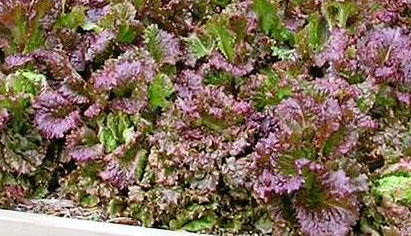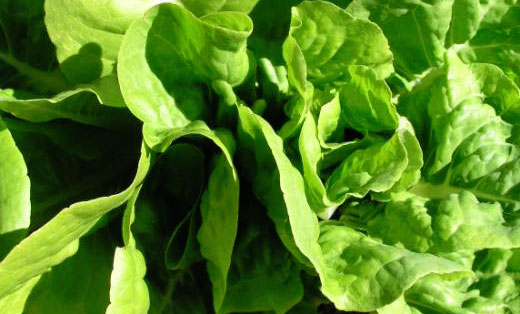Fall Veggies Are Cool To Grow
August 10, 2014
by Santa Rosa Extension
In Northwest Florida, vegetable lovers can enjoy harvests from their backyard gardens throughout the year. However, to ensure a productive and enjoyable vegetable garden, you must understand and abide by planting times.
In general, vegetable crops can be grouped into warm-season and cool-season varieties. Warm-season crops do not grow well at temperatures below 50 degrees F and are killed by frost. Cool-season crops are those that grow at lower temperatures, are not injured by light frost, but can’t take the heat.
In late summer and early fall, North Florida gardeners experience a unique opportunity. You can still plant another round of warm-season crops and/or start your cool-season vegetables.
Planting of warm-season vegetables gets to be more critical with the fall garden because we have an end point—frost and freezes. When planted too late, plants will grow, but may not provide enough of a harvest to make the effort worthwhile. Examples are peppers, eggplants and tomatoes. These vegetables can easily take up to two months from transplanting to producing the first fruit. All the time, the fall is getting shorter in day length and cooler in temperatures. That’s really tough on “warm-loving,” full-sun plants.
Since timing is so important with the fall crop, choose warm-season crops that will produce well within a short time. Look for fast-maturing and determinant or bush-type cultivars to ensure a good yield before frost.
Crops to plant outdoors in August include bush and lima beans, cauliflower, collards, cucumbers, onions, southern peas, peppers, squash, tomato and turnips.
In September, you can set out beets, broccoli, cabbage, carrots, endive, kale, kohlrabi, mustard and radish.
The cooler temperatures of October are better for planting Chinese cabbage, lettuce and spinach.
 To find specific recommendations on when to plant vegetables in Florida, read the UF/IFAS “Vegetable Gardening Guide”. It’s online at edis.ifas.ufl.edu/vh021
To find specific recommendations on when to plant vegetables in Florida, read the UF/IFAS “Vegetable Gardening Guide”. It’s online at edis.ifas.ufl.edu/vh021
The leafy crops excel in the fall. Some of the more popular leafy crops are Swiss chard, collards, spinach, mustard, turnip greens and lettuce. Endive, escarole, kale, arugula and the greens of mesclun mix also do very well during the cooler months.
Garden lettuces can be divided into three classes based on habit of growth – leaf or loose-leaf types, semi-heading types (such as butterhead and romaine) and heading or crisp-head types.
Crisp-head lettuces, such as the iceberg types available in supermarkets, are more of a challenge to grow here, so its recommend you stay with the leaf and semi-heading varieties. Other than generally avoiding the heading types, feel free to try just about any variety that strikes your fancy.
Leaf lettuces are the most decorative and least-demanding. They also are among the most heat-tolerant lettuces. This type of lettuce grows in a loose rosette of foliage, and the leaves can be smooth or crinkled, pointed, lobed, curled or ruffled. Foliage color runs from deep ruby red to dark green to pale greenish yellow, with just about every combination in between.
Collards will withstand wide ranges of temperatures if properly conditioned. They may be direct seeded and or plants can be transplanted. Collards may be harvested by cutting the whole plant or by “cropping” individual leaves.
Onions are generally grown from sets or plants. Sets and plants will require about six to eight weeks to reach eating size. Bulbing onions will not be ready to harvest until spring.
Radishes are fast growers and fun for the kids. Many are ready to harvest 25 to 30 days after planting.
So take the leap and “fall” into vegetable gardening.
Comments
One Response to “Fall Veggies Are Cool To Grow”




And I thought gardening was over until Fall. I have a huge pile of free horse manure if anyone would like to use some for their garden. Located in Cantonment. 587-2754